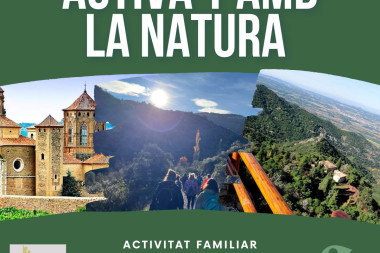Nature OTHER PLACES
Paratge Natural d'Interès Nacional de Poblet
The Poblet Natural Area of National Interest is in the county of Conca de Barberà in the municipalities of L’Espluga de Francolí and Vimbodí i Poblet. It has two distinct types of relief: the mountainous northern slopes of the Prades Mountains and the plains of the southernmost part, dotted with traditional rural and residential villages. Covering an area of 2,460 hectares, the highest point is the Tossal de la Baltasana (1,201 metres) in the Prades Mountains. In 1998, the protected area was extended by more than 919 hectares with the declaration of the Partial Nature Reserves of El Barranc de la Trinitat and El Barranc del Titllar. It has a wide diversity of vegetation in a relatively small area. Of particular interest are the coastal or mountain holm oak woods that are interspersed with cultivated land, especially the vineyards that produce the Conca de Barberà designation of origin wine. The spectacular expanse of forest, the orientation and the climate make this home to a wide variety of wildlife, including some species with Euro-Siberian and Mid-European requirements, such as the Eurasian nuthatch and the thrush. During the winter months you can see a large number of birds of prey, including the goshawk, the tawny owl, Bonelli’s eagle and the peregrine falcon. Mammals, which are more difficult to see due to their nocturnal habits, include typical Mediterranean woodland animals such as the badger, the marten and the fox. There are also large populations of wild boar and roe-deer, which were reintroduced in 1995. A 2,276-hectare area known as the Bosc de Poblet Wildlife Refuge has been declared to protect these animal communities. The Bosc de Poblet (Poblet Woodland) is a popular place for hiking as its extensive network of trails makes it easy to reach the area’s most outstanding beauty spots. It is also a good place to enjoy other outdoor activities such as rock climbing, potholing, mountain biking and archery. The name Poblet comes from the monastery founded in the 12th century on land donated by Count Ramon Berenguer IV to the monks of the Cistercian order. Today the Monastery of Santa Maria de Poblet, a UNESCO World Heritage Site since 1991, is one of the highlights of the Cistercian Monastery Itinerary.








